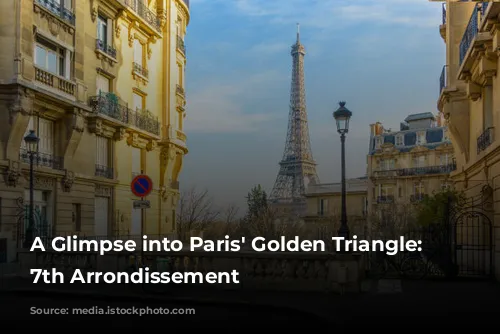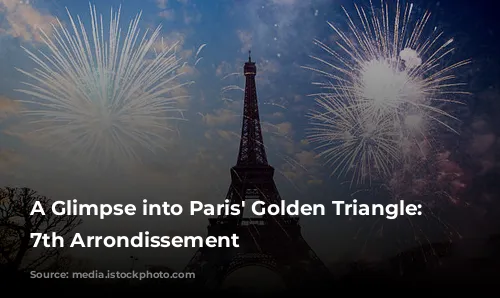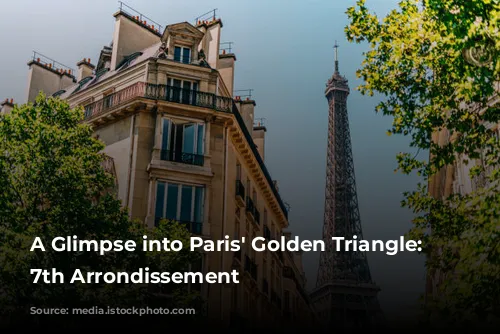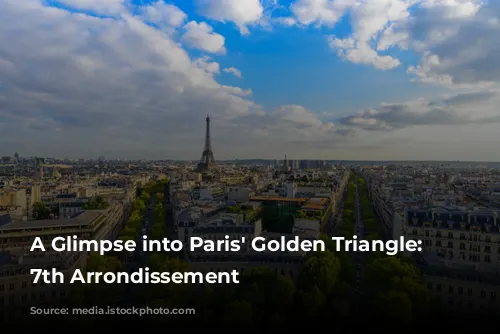Imagine strolling along the Seine River, the Eiffel Tower glistening in the distance. This enchanting scene is just a taste of the 7th arrondissement, one of Paris’ most captivating districts. It’s not just a pretty picture, though. This arrondissement boasts a rich history, impressive architecture, and a captivating blend of culture and power.
A Realm of Royalty and Politics
The 7th arrondissement, fondly known as le septième in French, is more than just a geographical location. It’s a window into Parisian history, reflecting the city’s evolution from a royal court to a center of government and international diplomacy.
The Palais-Bourbon, home to the French National Assembly, lends its name to this arrondissement, hinting at its political significance. From the imposing Hôtel des Invalides (Napoleon’s final resting place) to the charming Chapel of Our Lady of the Miraculous Medal, the 7th brims with historical landmarks.
But it’s not just history that defines this neighborhood. It’s also a cultural hub, home to renowned museums like the Musée d’Orsay, the Musée Rodin, and the Musée du Quai Branly – Jacques Chirac. These institutions attract art enthusiasts from around the world, showcasing the vibrant artistic heritage of France.
A Neighborhood Where History Meets Modernity
The 7th arrondissement sits on the Rive Gauche, the Left Bank of the Seine. This central location has attracted the crème de la crème of Parisian society since the 17th century.
Once the domain of French nobility, the Faubourg Saint-Germain, a historical neighborhood within the 7th arrondissement, became the epitome of refined living. Grand mansions built by the most prominent families, like the Hôtel Matignon, Hôtel de Salm, and Hôtel Biron, stand as testaments to this era.
These magnificent palaces, confiscated after the French Revolution, were transformed into national institutions, symbolizing the Republic’s embrace of grandeur. The term “les ors de la Republique” (“the golds of the Republic”), referring to the opulent ambiance of these national palaces, reflects this historical transition.
A District of Distinction and Prestige
The 7th arrondissement’s allure has persisted through the ages. It remained the most exclusive district in Paris, attracting the country’s elite even after the French Revolution. The Ultra Party, a prominent political force, found its home in the Faubourg Saint-Germain during the Restoration period, solidifying the district’s political influence.
Despite losing some of its political clout, the 7th remained a hub of Parisian social life. The district hosted five Universal Exhibitions, each leaving its mark on the cityscape. The Eiffel Tower and the Orsay building, built for these exhibitions, are testaments to the 7th’s enduring influence.
A Vibrant Neighborhood with a Global Reach
The 7th arrondissement isn’t just about history and grandeur. It’s also a thriving hub of international activity. Foreign embassies, including the Italian embassy housed in the historic Hôtel de Boisgelin, contribute to the neighborhood’s cosmopolitan atmosphere.
The presence of educational institutions, such as the Istituto Statale Italiano Leonardo Da Vinci and the American University of Paris, further enhances the 7th’s international appeal. The Ministry of Agriculture, the Ministry of Foreign Affairs, and the Ministry of National Education, all located in the arrondissement, underscore its importance on the national stage.
A Legacy of Influence and Change
The 7th arrondissement remains a political stronghold. The district consistently leans right in its voting patterns, as evidenced by the support for François Fillon during the 2017 French presidential election. This conservative leaning is deeply rooted in the arrondissement’s history as the home of French aristocracy and political power.
Despite its conservative leanings, the 7th is open to change. Its hosting of the equestrian events for the 1900 Summer Olympics is a testament to its ability to embrace new developments. The district is a dynamic blend of tradition and modernity, showcasing the best of Paris’ rich past and vibrant present.
In conclusion, the 7th arrondissement of Paris is a fascinating tapestry woven with history, culture, and political influence. From its royal origins to its present-day cosmopolitanism, this district continues to captivate and inspire. It’s a place where the past meets the present, creating a unique and captivating atmosphere that makes the 7th arrondissement a true gem of Paris.






